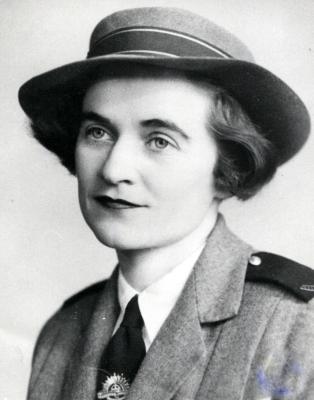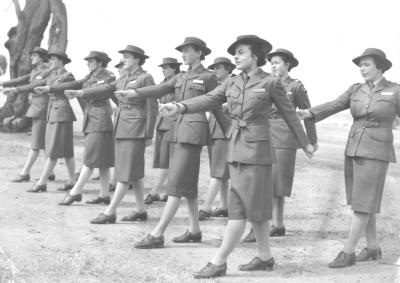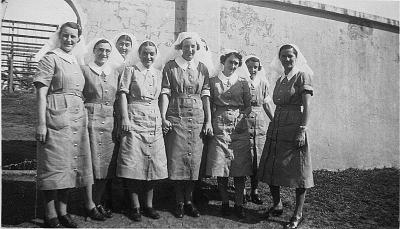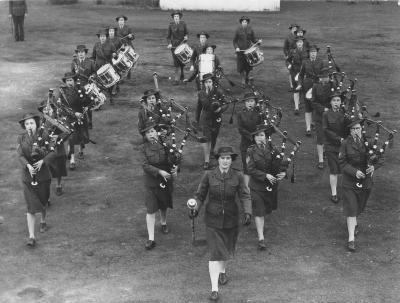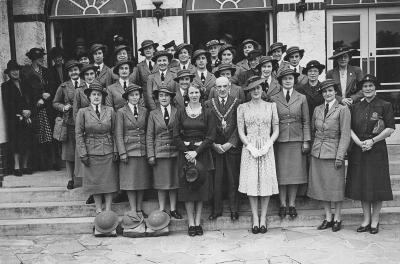World War 2, Australia Western Australia, SS Vyner Brooke, BEARD, 1940
1940Studio portrait of Sister Alma May Beard Killed in Action 14 February 1942. Sister Beard enlisted in the Australian Army Nursing Service and was posted to the 2/13th Australian General Hospital in Malaya. She was evacuated from Singapore in February 1942 aboard the ill fated Vyner Brooke. The ship was bombed by the Japanese in the Bangka Strait. Sister Beard survived the bombing but was murdered by the Japanese on Bangka Island. Sister Alma May Beard was born in Toodyay, Western Australia, in 1913. She started her nursing career at Perth Hospital and later moved to Sydney to gain experience with a larger hospital.
After returning to Western Australia, Sister Beard enlisted in the Australian Army Nursing Service on 19 June 1941. She was deployed to Malaya as part of the 2/13th Australian General Hospital in September and remained there until the evacuation back to Singapore in January 1942.
After the war, Lieutenant Colonel Vivian Bullwinkel wrote to Sister Beard’s parents, stating that “…her brave conduct in an hour of crisis has added lustre to the service to which she so nobly carried on.”
On 12 February 1942, Vyner Brooke was one the last ships carrying evacuees to leave Singapore. Although she usually only carried 12 passengers, in addition to her 47 crew, Vyner Brooke sailed south with 181 passengers embarked, most of them women and children. Among the passengers were the last 65 Australian nurses in Singapore. Throughout the daylight hours of 13 February Vyner Brooke laid up in the lee of a small jungle-covered island, but she was attacked late in the afternoon by a Japanese aircraft, fortunately with no serious casualties. At sunset she made a run for the Banka Strait, heading for Palembang in Sumatra. Prowling Japanese warships, however, impeded her progress and daylight on February 14th found her dangerously exposed on a flat sea just inside the strait.
Not long after 2 pm Vyner Brooke was attacked by several Japanese aircraft. Despite evasive action, she was crippled by several bombs and within half an hour rolled over and sunk bow first. Approximately 150 survivors eventually made it ashore at Bangka Island, The island had already been occupied by the Japanese and most of the survivors were taken captive.
However, an awful fate awaited many of those that landed on Radji beach. There, survivors from the Vyner Brooke joined up with another party of civilians and up to 60 Commonwealth servicemen and merchant sailors, who had made it ashore after their own vessels were sunk. After an unsuccessful effort to gain food and assistance from local villagers, a deputation was sent to contact the Japanese, with the aim of having the group taken prisoner. Anticipating this, all but one of the civilian women followed behind. A party of Japanese troops arrived at Radji Beach a few hours later. They shot and bayoneted the males and then forced the 22 Australian nurses and the one British civilian woman who had remained to wade into the sea, then shot them from behind. There were only two survivors - Sister Vivian Bullwinkel, and Private Cecil Kinsley, a British soldier. After hiding in the jungle for several days the pair eventually gave themselves up to the Japanese. Kinsley died a few days later from his wounds, and Bullwinkel spent the rest of the war as an internee.
Of the 65 Australian nurses embarked upon the Vyner Brooke, 12 were killed during the air attack or drowned following the sinking, 21 were murdered on Radji Beach, and 32 became internees, 8 of whom subsequently died before the end of the war.
Details
Details
War Gallery at the Australian Army Museum of WA
Open in Google Maps
Nearest geotagged records:
- CHIFFINGS, PETER JOHN (0km away)
- TROPHY PRESENTATION FOR FIRST YORK TO TOODYAY RELAY 1980 (0km away)
- CONNORS MILL AND ST. STEPHENS (0.01km away)
- OPENING OF REFURBISHED CONNOR'S MILL AND TOODYAY TOURIST CENTRE (0.01km away)
- INSTALLING MILLING MACHINERY IN CONNOR'S MILL 1994; BRAN SIEVE (0.01km away)
- COORINJA WINERY DISPLAY (0.01km away)
- POWER STATION SWITCHBOARD; TOODYAY (0.01km away)
- CONNOR'S MILL, RE-OPENING AFTER RESTORATION (0.01km away)
- HONEY PROCESSING DISPLAY, CONNOR"S MILL (0.01km away)
- SAM COOK AND HONEY DISPLAY, CONNOR'S MILL 1980S (0.01km away)
View all geotagged records...
Australian Army Museum of Western Australia
Australian Army Museum of Western Australia
Other items from Australian Army Museum of Western Australia
- Interwar, Western Australia, FAIRS, 51 Battalion, 1920
- World War 2, Australia Western Australia, SS Vyner Brooke, HODGSON, 1940
- World War 2, Australia, Voluntary Aid Detachment, 1940
- World War 2, Australia, Australian Women’s Army Service, 1943
- World War 2, Australia, Australian Women’s Army Service, 1943
- World War 2, Malaya, Australian Army Nursing Service, 1941
- World War 2, Europe, 1945
- World War 2, Australia, Australian Women’s Army Service, 1944
- World War 2, Australia, Australian Army Nursing Service, 1942
- World War 2, Europe England, Australian Army Nursing Service, 1940
- World War 2, Australia, Australian Army Nursing Service, 1942
- World War 1, Western Australia Claremont, 51 Battalion, 1916

